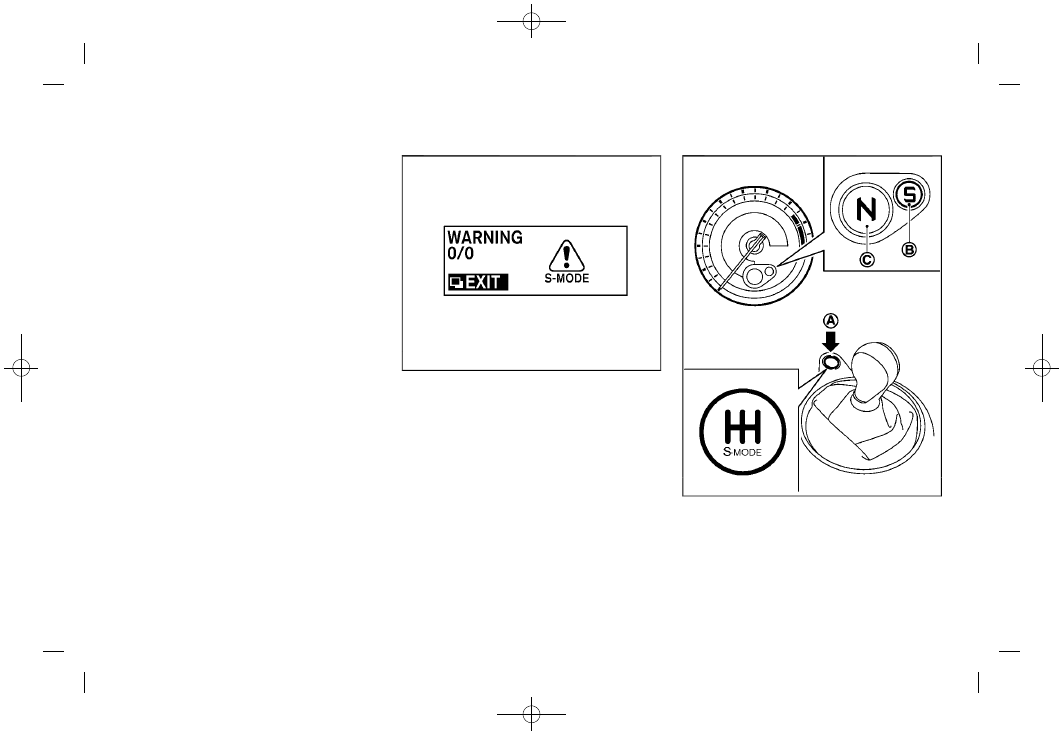Nissan 370Z Roadster (2017 year). Instruction - part 20

(306,1)
[ Edit: 2016/ 2/ 22
Model: 2017MY NISSAN 370Z(Z34) OM17E00Z34U0 ]
5-18
Starting and driving
gear. Thus, the engine speed may be kept
high depending on the gear position and
vehicle speed.
.
When the clutch pedal is depressed with
the transmission in neutral, the system
operates for approximately 2 seconds, and
then the engine speed will decrease to the
idle speed.
.
When the engine coolant temperature is low
right after starting the engine, engine speed
synchronization will be delayed or may be
insufficient.
.
The system controls the engine speed up to
the rev limit. Note that S-MODE is not a
function that prevents over-revving resulting
from shifting mistakes.
.
The system does not operate while the
vehicle is backing up.
.
If the engine speed is limited lower than
usual when the engine oil temperature is
extremely high, the system will control up to
the limited engine speed.
.
If the malfunction indicator light illuminates,
the system may not operate and the S-
MODE indicator turns off.
SSD0830
SynchroRev Match mode (S-MODE) warn-
ing:
The SynchroRev Match mode (S-MODE) warn-
ing will appear on the vehicle information display
and the S-MODE indicator will turn off if a
system malfunction occurs.
If the warning appears, the S-MODE function
will not operate, but manual transmission will
operate normally and driving can be continued.
Have the system checked. It is recommended
you visit a NISSAN dealer for this service.
SSD0831
Activating the system:
To activate the S-MODE, push the S-MODE
switch
*
A
. The S-MODE indicator
*
B
on the
tachometer will show “S”. To deactivate, push
and hold the S-MODE switch for more than 1
second. The S-MODE indicator will turn off.
While the S-MODE is off, you can drive the
Condition: